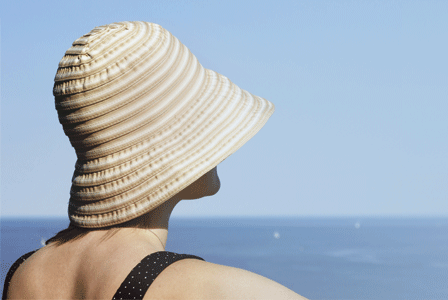
Somewhere between tanning with pure baby oil and slathering on the SPF 50+, appreciating sunshine got pretty complicated. With all the conflicting reports on sun benefits and risks and sunscreen confusion, what\’s a sun worshipper to do?
Somewhere between tanning with pure baby oil and slathering on the SPF 50+, appreciating sunshine got pretty complicated. With all the conflicting reports on sun benefits and risks and sunscreen confusion, what’s a sun worshipper to do?
We need vitamin D, which the body produces predominantly from sunshine exposure. We’re suffering from such low vitamin D that authors of a 2008 study deemed the situation a worldwide health problem.
“Lack of sun exposure and vitamin D deficiency has been linked to many serious chronic diseases, including autoimmune diseases, infectious diseases, cardiovascular disease, and deadly cancers,” they wrote in the Clinical Journal of the American Society of Nephrology.
Good for the bones
In another study on vitamin D reported in the American Journal of Clinical Nutrition, researchers point out vitamin D’s necessity to bone health. “[A] deficiency not only causes rickets among children but also precipitates and exacerbates osteoporosis among adults and causes the painful bone disease osteomalacia.”
Many factors, including skin pigmentation, time of day, season, and latitude, affect vitamin D production, so creating general guidelines about how much sun we need is difficult. Vitamin D researchers recommend five to 30 minutes of sun exposure between 11 am and 4 pm at least twice a week to the face, arms, legs, or back without sunscreen to achieve adequate vitamin D synthesis.
Safe sunning
Practising sun safety and choosing appropriate sun protection is essential, especially in the heat of summer. The Environmental Working Group (EWG), in their sunscreen investigation of over 1,100 brand name sunscreens, found that 80 percent provide inadequate coverage and contain ingredients posing known or suspected health hazards.
The EWG endorses products with mineral-based ingredients, such as zinc oxide and titanium dioxide at 7 percent or more for safe, broad spectrum UVA and UVB protection.
“Consumers who use sunscreens without zinc and titanium are likely exposed to more UV radiation and greater numbers of hazardous ingredients than consumers relying on zinc and titanium products for sun protection,” the EWG reports at cosmeticdatabase.com, an excellent resource for specific product ratings.
Get sun savvy this summer and balance the need for the sun’s rays with a quality, nontoxic sunscreen and appropriate precautions.
The Environmental Working Group’s top things to avoid:
- Oxybenzone or benzophenone-3 (skin absorption, allergies, hormone problems)
- Spray and powder sunscreens (inhaling sunscreens can pose extra risks)
- Fragrance (allergies, reproductive problems)
- Sunscreen with added bug repellent (too much pesticide can accumulate in your body)
What’s your vitamin D status?
Vitamin D levels can be measured in the blood with serum 25-hydroxyvitamin D 25(OH)D. “Research suggests that the minimum blood level of 25(OH)D is 30 ng/mL in order to achieve health benefits,” Dr. Sara Kinnon of the Bellevue Natural Health Clinic in North Vancouver, BC, told alive.
“However, a level greater than 55 ng/mL is protective against many conditions, such as breast, prostate, or colon cancer. With varying levels offering different benefits, the consensus is that optimal levels are actually between 40 and 70 ng/mL.”
Dr. Kinnon recommends that, if people are concerned about vitamin D status, they undergo testing. Increased sun exposure and/or supplementation may be necessary.


